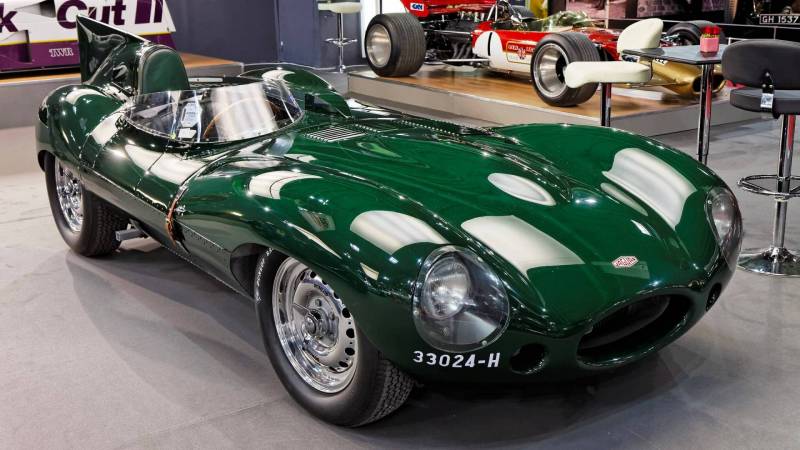Jaguar D-Type
Production: 1954 - 1957
Production Type: For Competitions
Produced: 71

About Jaguar D-Type
The Jaguar D-Type was designed specifically to win the Le Mans 24-hour race, it shared the straight-6 XK engine and many mechanical components with its C-Type. Its structure, however, was radically different, with innovative monocoque construction and slippery aerodynamics that integrated aviation technology, including in some examples a distinctive vertical stabilizer. Engine displacement began at 3.4 litres, was enlarged to 3.8 L in 1957, and reduced to 3.0 L in 1958 when Le Mans rules limited engines for sports racing cars to that maximum. D-Types won Le Mans in 1955, 1956 and 1957 that proved to be the most successful year, Jaguar D-Types took five of the top six places. After Jaguar temporarily retired from racing as a factory team, the company offered the remaining unfinished D-Types as street-legal XKSS versions, whose perfunctory road-going equipment made them eligible for production sports car races in America.
Jaguar D-Type Overview
The Jaguar D-Type was a revolutionary race car produced by Jaguar between 1954 and 1957. Designed with cutting-edge aerodynamics by Malcolm Sayer, the D-Type featured a distinctive vertical fin behind the driver’s seat and an aluminum monocoque construction, setting new standards in lightweight design and stability at high speeds.The D-Type’s racing legacy is cemented by its three consecutive victories at the 24 Hours of Le Mans (1955-1957).
Jaguar D-Type Technical Specification
Long Nose
Engine Capacity: 3442 cc
Number of Cylinders: 6
Compression Ratio: 9:1
Cylinder Bore/Stroke: 83×106 mm
Carburetors: Three DCO3 40mm Weber carburetors
Power Output: 250 hp
Prototype and Serial
Engine Capacity: 3442 cc
Number of Cylinders: 6
Compression Ratio: 9:1
Modifications: Enlarged valves
Cylinder Bore/Stroke: 83×106 mm
Carburetors: Three DCO3 40mm Weber carburetors
Power Output: 270 hp
Jaguar D-Type Models
Jaguar D-Type Prototype
Production: 6
Jaguar D-Type Long Nose
Production: 12
Serial Jaguar D-Type (Short Nose)
Production: 44